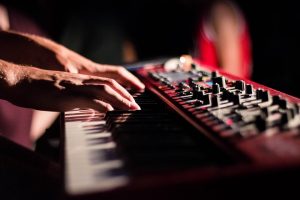Piano is an ancestor of the modern day keyboards and it is also the most well known and loved musical instrument of all times. This is because it has a broad range and a wide variety of music can be played on it. It can be used to play solo music or with other instruments or to accompany a singer by giving background notes. Piano is a stringed instrument. So, naturally the ancestors of pianos are stringed instruments. Bartolomeo de Francesco Cristofori is the inventor of the first piano in 1700. His piano had hammers that struck the strings with a falling momentum.
The keyboard is different from the piano, and is definitely a cheaper investment overall. If you are looking for keyboard classes, Ossia Music School is just the place. They conduct classes for adults and children, and also have short-term classes if you are unsure of committing to learning this instrument long-term. For Keyboard Classes Singapore, you should definitely check them out.

While making pianos, the best quality materials are used not just to have a good appearance but also to have a good sound quality. For the construction of the rim, long fibers of maple wood are used and for the braces, long fibers of spruce are used. Wood is utilized for making patterns in other parts of the piano. Metal is used for cast iron plates and sand is used for cast iron molds. The sand used is not pure sand. It is sand with modified properties which have been modified by adding additives. Molten iron which is used for casting is pig iron with steel and scrap iron to add strength.
Specially trained engineers called scale engineers are the ones designing pianos. They choose the materials, create designs and specifications and develop the interactions of the parts of a piano. The most important aspect while designing a piano is its structural strength. Given that a piano must perform well, it should also remain stable with time as changing conditions affect the materials in the piano differently.
The main processes involved in the manufacturing process of a piano are bending the rim of the case, making the structural components, creating the sound board, stringing and tuning and constructing the keyboard. The most important part when manufacturing a piano is its quality control. Since the strength of a piano depends on the interaction of various parts of the piano with each other. The quality control of a piano starts with the scale engineer’s design. Chemical analysis of the metals used to create a piano is done by the metallurgists to check the different constituents such as carbon, Sulphur etc. Temperature control is also important. To know more about pianos in detail, you can refer to any online site or visit any keyboard classes Singapore.